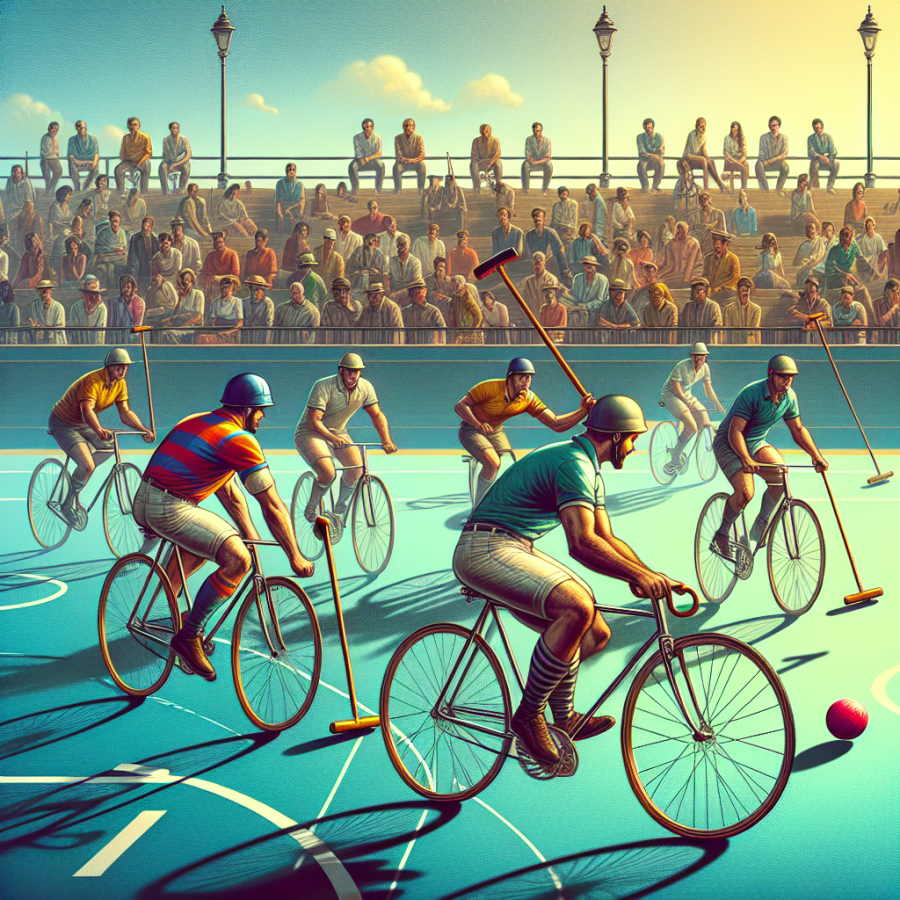Mastering the Mallet: The Fundamentals of Bicycle Polo
Bicycle polo, a dynamic fusion of biking and polo, has been capturing the fascination of adventure-seekers worldwide. To thrive in this sport, mastering the mallet is a non-negotiable skill, akin to wielding a sword in battle. Players must navigate the field, keep their balance, and strike with precision—all while maintaining a seamless connection with their bicycles.
Gripping the Mallet: The first step to mastering bicycle polo is to hold the mallet correctly. The grip should be firm yet flexible, allowing for a range of movements. The top hand should control the mallet's direction, while the bottom hand provides the power for the strike. Imagine holding a tennis racket; it's a similar distribution of task between the hands.
Stance and Balance: Stance goes hand in hand with grip. With feet planted firmly on the pedals, players must learn to distribute their weight evenly between the bicycle and the mallet. This balance ensures optimal control and agility, which are particularly important when making quick turns or sudden stops.
Swing Techniques: Swing technique is pivotal in bicycle polo. There are various swings suited for different plays: the forehand shot for power, the backhand for defense and quick returns, and the push or shuffle for precision and control of the ball. Each swing has its nuances, and mastering when and how to use them is crucial to game strategy.
Understanding the Ball: As players refine their mallet skills, predicting the ball's trajectory becomes essential. It's not just about hitting the ball, but also anticipating where it will go and planning the next move accordingly.
Ball Control: The highest level of mallet mastery involves not just moving the ball, but controlling it with fines themes. Using the mallet's hook to capture and steer the ball is a nuanced skill that can give a player significant strategic advantage.
Complementary Cycling Skills: Mallet mastery must be accompanied by superior cycling skills. Stopping, starting, and maneuvering the bike with one hand while the other wields the mallet is a unique challenge. Players also need to master bike-handling abilities to avoid collisions and maintain control at high speeds.
Drills and Practice: As with any skill, practice is the road to perfection. Drills that focus on mallet handling, such as passing accuracy or target shooting, can enhance a player's capabilities. Regular practice with teammates can also facilitate better understanding of in-game scenarios and improve reflexes.
Read also:
The Thrilling World of Roller Derby: An In-depth Exploration
The Rise of Bicycle Polo: A Modern Twist on a Traditional Sport
Bicycle polo, a sport that brings together the finesse of traditional polo with the environmentally-friendly and accessible bicycle, is emerging as a modern twist on a centennial game. This innovative version has swiftly garnered a following among cycling enthusiasts and fans of team sports who seek a fresh, dynamic challenge.
Originating from traditional horse polo, which is often associated with aristocracy and elite sporting, bicycle polo has lowered barriers to entry, making it more inclusive. Unlike its equestrian counterpart, there's no need for expensive horses and expansive fields. Here, a standard bicycle and an urban space suffice, thus democratizing the sport and attracting a diverse group of participants.
The game's mechanics are similar to traditional polo, with teams maneuvering a ball into an opponent's goal using mallets. However, as one might expect, balancing on two wheels adds an extra layer of complexity. Players must have not only the hand-eye coordination to manage the mallet and ball but also the cycling skills to navigate the field and evade competitors.
Competitions have been sprouting up globally, each showcasing the thrilling pace and unique skills required for bicycle polo. These tournaments not only highlight the game's competitive edge but also foster camaraderie and community amongst players. Spectators are often treated to a festival-like atmosphere, combining the excitement of sport with social interaction.
To ensure safety and fairness, organizations have been established to govern the rules and equipment used in bicycle polo. Lightweight, durable bikes and helmets are standard, protecting players as they engage in this high-energy sport. The mallets, usually made from strong plastics or metals with a rubber grip, are specifically designed to provide control and precision when hitting the ball.
One of the remarkable aspects of bicycle polo is its adaptability. From hardcourt surfaces in urban settings to grass fields in public parks, the sport can be played virtually anywhere space allows. This adaptability also means that the sport can be enjoyed year-round in various climates, provided safety considerations are heeded, especially in icy or wet conditions.
The sustainable angle of bicycle polo cannot be understated. In an age where environmental concerns are paramount, choosing bicycles over horses is not only economically efficient but also eco-friendly. This aligns well with the values of an emerging generation that seeks green alternatives in sports and recreation.
Training and preparation for bicycle polo demand a blend of physical conditioning and strategic thinking. Cycling workouts enhance the player's endurance and agility, which are essential for sustained gameplay.




